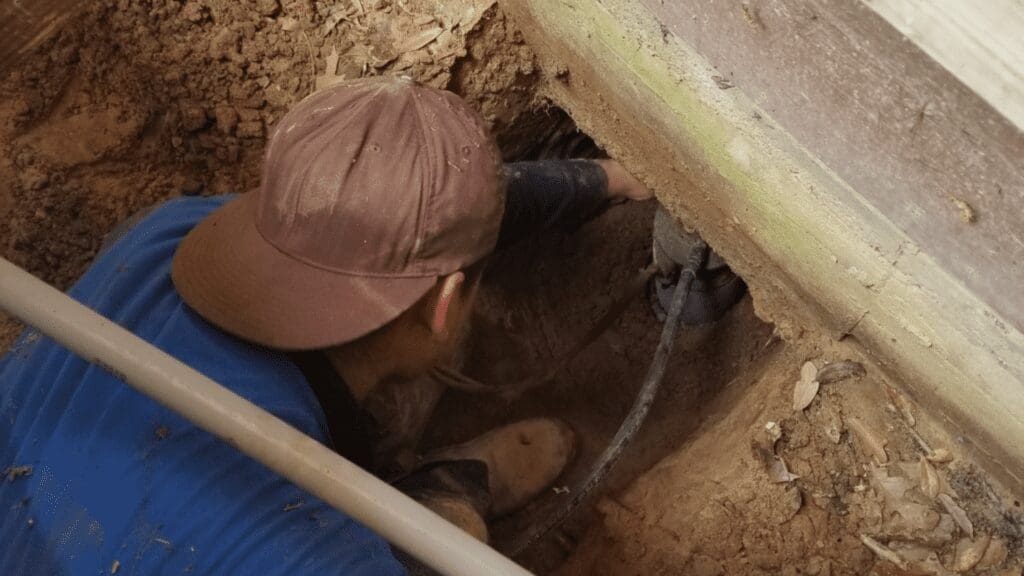A solid foundation is critically important if you want to have a home that will last forever. But even though foundations are built to resist soil movement, keep out moisture, and insulate against freezing temperatures, it’s essential to inspect your entire home and foundation on a regular basis in order to catch potential problems as early as possible.
When inspecting your home, a few problems you may notice include: water pooling around your foundation, cracks in walls, a wet-leaking crawl space, doors and windows that get stuck, uneven or soft floors, and/or tilting outdoor elements, such as stairs, chimney, fence posts, and trees. If you observe any of these issues or other problems that may indicate foundation damage, make sure you contact a foundation repair contractor with appropriate licensing and experience.
Because a house can easily be damaged when repairs are carried out by inexperienced workers, we already wrote a blog post about some of the problems that Houston homeowners could face when repairing their own foundations. To better understand the importance of hiring a professional foundation repair contractor with a proven track record of success, here are a few more foundation repair problems you may face if you hire untrained and unskilled workers.
Poor workmanship
When it comes to foundation repair projects, poor workmanship may refer not only to incomplete or defective work but also failed to follow house plans, specifications, and industry standards. As well, some inexperienced workers might not know how to use specialized equipment correctly.
For instance, a common mistake we see is workers failing to push piers to the point of refusal when lifting a home to repair its foundation. Piers that aren’t driven all the way down through unstable soil until bedrock or other solid stratum is reached won’t provide adequate support for the structure above. Contractors using fewer piers than specified is another issue we come across quite often. In both these situations, the structure may become unstable over time, leading to major structural damage that could render the house uninhabitable.
Another problem is that inexperienced workers sometimes use materials and repair methods that aren’t suitable for fixing specific foundation damage. As an example, concrete epoxy and polyurethane are two materials commonly used to repair foundation cracks. But there is a very important difference between them: while the former is able to seal cracks from moisture intrusion and also bring foundations back to their original strength and integrity, the latter is typically used to fix non-structural cracks and stop air leaks. So, although using polyurethane instead of concrete epoxy might not seem to be an important issue, it could have serious consequences for your home, particularly if there are structural cracks in your foundation.
Ignoring Existing Foundation Problems
When existing foundation problems are ignored, a series of repairs might be required later on. This could involve more hassle, inconvenience, time, and additional costs for you. For example, an inexperienced contractor may focus only on repairing a large crack in your foundation without trying to identify and fix the underlying cause of the issues, which could be a collapsed pier. Suppose the contractor repairs the crack without also replacing the pier to bring the foundation back to its original position. In that case, the initial crack may reappear shortly after the repair, and more cracks may develop in the future. As a result, you might need to hire another contractor to correct the problem.
As well, an inexperienced contractor may fail to diagnose foundation problems correctly. Foundation failure, for instance, could be erroneously attributed to shallow footing when it may be caused by differential settlement due to poor drainage. Not only will a wrong diagnosis lead to inadequate but still costly repairs; the repairs will be completely ineffective since the root cause of the problem remains unaddressed.
Installing Specific Elements Incorrectly
Elements, like French drains and root barrier systems, are sometimes used as additional measures for preventing foundation damage. But if these elements aren’t installed correctly, they may fail to offer the protection needed. For example, when installing a French drain, a contractor may fail to slope the drainage trench properly, use the right type of fabric for lining the drain, and/or choose the right drainage rock and drainpipe. All these could prevent the French drain from functioning properly.
As well, if your home’s foundation has already sustained damage due to invasive tree roots, one way to correct the problem is to install root barriers. But when root barriers are installed incorrectly, they may prevent trees from developing healthy root systems, meaning they could become a hazard to your home. Roots could also grow over and under incorrectly installed root barrier systems and encroach on your foundation, damaging your home.
At Allied Foundation, our team of licensed and experienced professionals can guarantee exceptional work regardless of your foundation problems you have. To schedule your free foundation inspection, give us a call today or fill out our online form!


One Response
Amazing post! Thanks for posting such informative content.